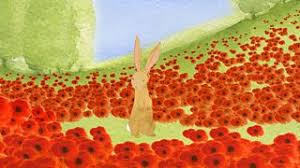
Today is Remembrance Day. On the 11th hour of the 11th day of the 11th month, the country stands still and is silence for two minutes.
In this two minutes, we remember soldiers that have died in wars past and present.

Remembrance Day was first held in 1919, one year after the First World War ended. It is sometimes known as Armistice Day.
On Remembrance Day, people will lay wreaths of poppies on statues and monuments to remember all the soldiers who died for us.

Poppies are worn on Remembrance Day because they are the flowers which grew on the battlefields after the First World War ended.

In class today, we read the story Where the Poppies Now Grow by Hilary Robinson and Martin Impey.

We also watched the short video from Cbeebies – click here if you would like to watch it again.

Any money that is raised by the Royal British Legion goes to soldiers and their families if they have been hurt or injured.

LEST WE FORGET






















